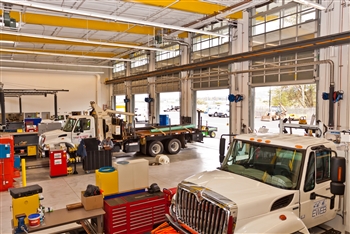Related News
Related News
-
Sustainability Snapshot - Celebrating Energy Efficiency Projects in the Community
Sustainability Snapshops highlight impactful projects completed by EWEB's Customer Solutions department, as a way to celebrate the meaningful work happening behind the scenes.
Find Out More -
EWEB secures $2.5 billion of reliable, affordable, carbon-free energy for customers
The new contract with EWEB’s largest energy supplier, the Bonneville Power Administration, forms the foundation of a diverse energy portfolio.
Find Out More -
EWEB Hometown Heroes compete internationally
Out of 290 teams from 14 different countries, EWEB's Lineman Rodeo team places in the top third of competitors.
Find Out More -
EWEB completes helicopter installation of salmon habitat features
EWEB adds downed trees and 2,000 tons of gravel to the Uupper McKenzie River below Tamolitch Falls to improve spawning habitat.
Find Out More -
Court rules in favor of EWEB in Carmen-Smith litigation
The U.S. District Court in Eugene has granted EWEB's motion to dismiss a lawsuit brought under the Endangered Species Act pertaining to fish passage at EWEB’s Trail Bridge Dam. The favorable ruling clears the way for EWEB to continue advancing towards implementation of permanent fish passage at the dam.
Find Out More -
EWEB proposes modified plan for permanent fish passage at Trail Bridge Dam
After eight months of extensive collaboration and analysis with scientific experts at two federal regulatory agencies, EWEB is proposing an improved plan to build permanent fish passage facilities at Trail Bridge Dam on the McKenzie River.
Find Out More -
Sustainability Snapshot - Ideal Steel July 2025
Our second Sustainability Snapshop highlights a project where EWEB helped a local industrial warehouse upgrade over 1,000 flourescent lights to new efficient LEDs.
Find Out More -
EWEB prepares for wildfire season with risk mitigation measures
EWEB is building a more resilient electric system to weather various types of disasters, from wildfire to winter storms.
Find Out More -
Improving habitat resiliency throughout the Upper McKenzie
Environmental Responsibility is a core guiding value for EWEB decision-making. This summer, EWEB continues its commitment to environmental stewardship with a robust slate of habitat enhancement updates throughout the upper McKenzie River, across the footprint of the Carmen-Smith Hydroelectric Project.
Find Out More -
EWEB weighs multi-billion-dollar decision affecting energy supply
EWEB is weighing energy supply decisions that will cost nearly $2 billion over the next two decades.
Find Out More -
EWEB opens applications for 2025 Electric Mobility Community Grant
The Eugene Water & Electric Board is now accepting applications for the 2025 Electric Mobility Grant, reinforcing EWEB's commitment to sustainability and cleaner transportation.
Find Out More -
Greenpower subscribers vote to award Greenpower Grant to SquareOne Villages
The Greenpower Grant, funded solely by voluntary customer subscriptions, supports local sustainability projects.
Find Out More -
EWEB reaffirms commitment to resilience with Wildfire Mitigation Plan approval
The utility is testing new equipment, leveraging technology, and incorporating third-party expertise to bolster electric system resiliency to a range of threats, including wildfire.
Find Out More -
Vote now for the winner of the 2025 Greenpower Grant
Get ready to cast your vote for the winner of the 2025 Greenpower Grant. EWEB is excited to announce the eligible candidates for this year's grant award! The winner of the Greenpower Grant will be voted on by Greenpower subscribers. Learn more about each origanization and their proposal before casting your vote.
Find Out More -
How EWEB’s Fleet Services reached 200,000 hours without a lost time injury
EWEB’s Fleet Services team reached a major safety milestone: 200,000 work hours without a workplace injury that results in an employee losing at least one full day of work.
Find Out More - Show More
EWEB cuts greenhouse gas emissions from operations 55% since 2010
March 28, 2025 • Aaron Orlowski, EWEB Communications

EWEB has significantly cut greenhouse gas emissions from its operations, achieving a 55% reduction since 2010, according to data in the customer-owned utility’s Climate Guidebook.
In 2024, emissions from EWEB’s operations were well below the 2010 baseline, surpassing EWEB’s goal of cutting emissions 50% by 2030. The latest version of EWEB’s Climate Guidebook, published in April, details these efforts and EWEB’s broader strategy to combat climate change.
“We’ve already met our 2030 emissions reduction target, but our work isn’t done,” said EWEB Climate Policy Analyst and Advisor Kelly Hoell. “But we have more to do to help our customers decarbonize and cut their own emissions. One of the first steps on that path is to keep our clean electricity affordable so that customers feel confident transitioning off fossil fuels and to electricity wherever they can.”
Renewable fuels drive fleet emissions reductions.
EWEB’s shift to renewable diesel and ethanol has significantly lowered emissions from its service vehicles. Since 2010, emissions from EWEB’s fleet have fallen 53%, even as fuel consumption increased 12% due to fleet expansion.
EWEB’s currently operates 418 in service units, 234 vehicles, 68 units of power-operated equipment and 116 trailers – a 9% increase since 2020.
However, from 2023 to 2024, fleet emissions rose 43% due to limited availability of renewable fuels, especially ethanol.
“Renewable fuel supplies aren’t expected to increase any time soon,” said EWEB Fleet Services Manager Gary Lentsch. “Shifting tax incentives have made non-domestic renewable fuel production less attractive for some suppliers, while demand has surged due to new policies like Washington State’s Clean Fuels Standard and the Federal Aviation Administration’s push to use renewable diesel for aviation fuel.” EWEB anticipates that availability of fuels like ethanol and renewable diesel may become even more limited in 2025 which could negatively impact EWEB’s future greenhouse gas emissions.
Water treatment drives operational electricity use.
EWEB’s electricity-related emissions fluctuate yearly based on weather conditions and the availability of hydropower generation. For instance, the highest emissions in the last 15 years occurred in 2019, when droughts across the Western U.S. reduced hydropower generation.
While overall electricity consumption has dropped 20% since 2010, emissions from EWEB’s electricity use were 3% higher in 2024 than in 2010.
Among EWEB’s facilities, the Hayden Bridge Water Filtration Plant is the largest electricity consumer, accounting for 64% of the utility’s electricity use in 2024. Pump stations moving that water added another 17%.
“Treating and moving water is our biggest driver of electricity consumption,” Hoell said. “That means water conservation directly translates to energy conservation.”
Emissions of from natural gas use have also fallen. From 2023 to 2024, those emissions dropped 51%, due to the sale of EWEB’s former headquarters building on the Willamette River.
EWEB will use new methods of greenhouse gas accounting starting in 2025.
Moving forward in 2025, EWEB plans to expand the boundaries of its greenhouse gas inventory to also include its emissions from owned power generation resources. This change will be in accordance with The Climate Registry’s Electric Power Sector Protocol.
These emissions have been reported to Oregon DEQ since its Greenhouse Gas Reporting Program began in 2010, but will now also be included in EWEB’s internal operations inventory.
“This change in methods will help us better align with industry standards specifically for electric utilities and allow for a more comprehensive reporting of our total emissions portfolio,” said Hoell.

